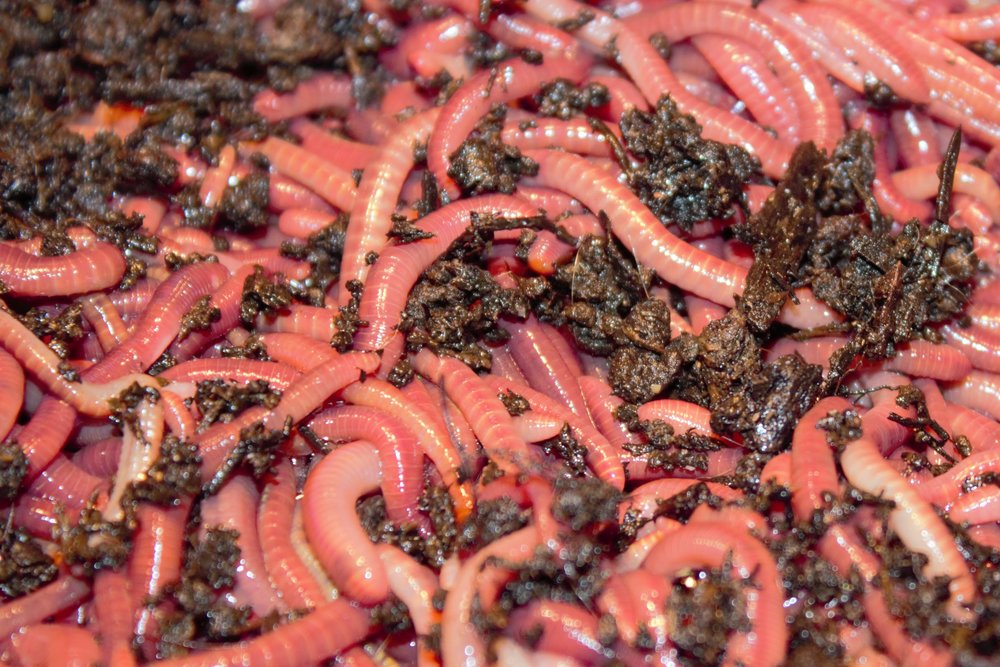Whatever You Required to Find Out About Red Wigglers for Composting
Red wigglers, or Eisenia fetida, play a critical role in the world of composting, changing organic waste into valuable dirt modifications. The procedure of setting up a worm bin and keeping it can present difficulties.
What Are Red Wigglers?

(Lake Rhodhiss Bait)
Indigenous to The United States and copyright, red wigglers are surface-dwelling organisms that like moist, cozy environments abundant in disintegrating natural matter. Their diet plan is composed largely of decomposing plant product, food scraps, and other organic debris, which they eat and break down effectively. As they absorb this product, they create nutrient-rich castings that boost dirt fertility.
Red wigglers are hermaphroditic, possessing both male and women reproductive organs, and can duplicate swiftly under optimal problems. This ability makes them an ideal option for composting systems, as their population can boost rapidly. Their strength and adaptability to numerous environments further strengthen their significance in lasting waste management techniques. In general, red wigglers are crucial factors to the process of recycling organic waste into useful garden compost.
Benefits of Utilizing Red Wigglers
Making use of red wigglers in composting systems offers many benefits that enhance both the effectiveness of waste monitoring and the quality of the resulting compost. These worms, clinically called Eisenia fetida, are particularly efficient at damaging down raw material, turning kitchen area scraps and lawn waste right into nutrient-rich garden compost at an accelerated rate.
One of the main advantages of using red wigglers is their ability to take in big amounts of organic material, commonly processing their weight in food waste daily. This high consumption rate brings about quicker decay and decreases the quantity of waste sent to garbage dumps. In addition, the spreadings produced by red wigglers are rich in important nutrients, helpful microbes, and enzymes, making them a superb plant food for yards and plants.
Furthermore, red wigglers prosper in a range of atmospheres, making them adaptable for both indoor and outdoor composting systems - red wigglers. Their visibility in a garden compost container assists to aerate the material, protecting against smells and promoting a healthy and balanced composting process. In general, employing red wigglers not only adds to efficient waste administration but also sustains sustainable gardening techniques via the production of premium compost
(Lake James Worms)
Establishing Up Your Worm Bin
To successfully establish a worm bin, it is vital to choose a suitable container that satisfies the demands of red wigglers while providing a conducive atmosphere for composting. A suitable container can be made from plastic, timber, or steel, with a capacity of at the very least 1 square foot for each extra pound of worms.
Make sure the container has sufficient water drainage holes to stop excess wetness, as red wigglers flourish in a moist, however not waterlogged, atmosphere. red wigglers. The container ought to additionally be aerated to provide sufficient airflow, preventing anaerobic conditions that can damage the worms
A perfect area for the worm container is a trendy, dark location, devoid of straight sunshine and extreme temperatures, as red wigglers prefer a temperature variety of 55 to 77 levels Fahrenheit.
Prior to presenting the worms, prepare bed linen materials such as shredded paper, cardboard, or coconut coir, which will provide both environment and food. Dampen the bed linen lightly to create an inviting atmosphere for the worms. Consider putting a cover on the container to maintain moisture and minimize insects, while guaranteeing it can be conveniently eliminated for maintenance.
Feeding and Treatment Guidelines
Feeding red wigglers is a crucial facet of preserving a healthy composting system. These worms prosper on a diverse diet regimen, mostly composed of natural materials such as vegetables and fruit scraps, coffee grounds, and smashed eggshells. It is necessary to prevent feeding them meat, milk, and oily foods, as these can produce undesirable odors and attract bugs.
When introducing food to your worm bin, cut or shred materials right into smaller items to help with quicker disintegration. Begin with tiny amounts to determine the worms' consumption price, gradually boosting the quantity as they adapt. It is suggested to alternating feeding areas within the bin to motivate thorough mixing and oygenation of the compost.

Troubleshooting Common Issues
Keeping a growing worm composting system can occasionally provide difficulties that need attention and troubleshooting. Common issues consist of an undesirable smell, which typically suggests overfeeding or the presence of anaerobic problems. To treat this, minimize the quantity of food added and make sure proper aeration by blending the bed linens material.
An additional constant trouble is the retreat of worms from the container. This can occur as a result of extreme moisture or unsuitable ecological problems. Routinely examine the moisture levels, intending for a moist however not soggy uniformity, and maintain optimum temperature levels in between 60-80 ° F(15-27 ° C )to create a comfortable habitat for your red wigglers.
Parasites, such as fruit flies, can likewise invade worm containers. red wigglers. To combat this, cover food scraps with a layer of bed linens or shredded paper to prevent flies from laying eggs. Additionally, make certain that any type of food included is fresh and without mold, which can bring in unwanted bugs
Lastly, if your worms appear inactive, examine for tension elements such as temperature changes or insufficient dampness. Attending to these usual problems will certainly help preserve a this post healthy and balanced and efficient worm composting system.
Verdict
In summary, red wigglers, or Eisenia fetida, play an essential role in lasting waste monitoring with vermicomposting. Their capacity to efficiently convert natural waste right into nutrient-dense castings improves dirt health and promotes plant development. Correct setup and maintenance of a worm container, along with adherence to feeding guidelines, make sure a growing community that lessens land fill contributions. Dealing with typical concerns promptly even more supports the efficiency of this eco-friendly technique, contributing to environmental sustainability and agricultural efficiency.